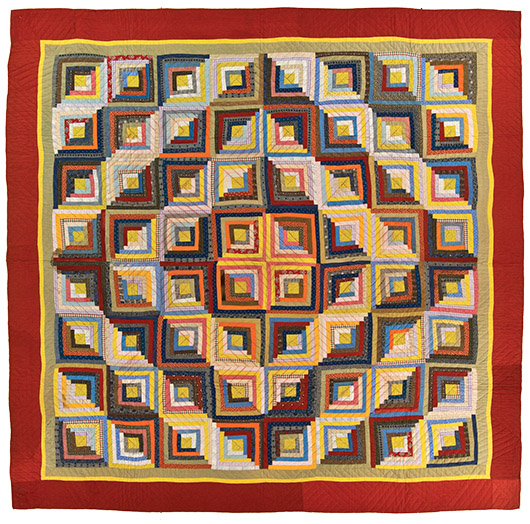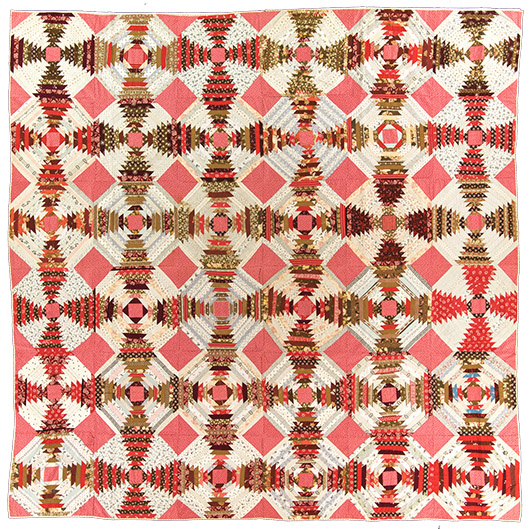
Joseph Knibb long case clock. Estimate: £80,000-£120,000 ($133,455-$200,182). Dreweatts & Bloomsbury image. LONDON – One of the most important early English long case clocks to come on to the market in the last 10 years will be sold at Dreweatts & Bloomsbury Auctions’ sale of fine clocks, barometers and scientific instruments on Tuesday, March 11.
LiveAuctioneers.com will provide Internet live bidding.
Bought by the existing owners great grandfather from Evesham, Worcestershire in around 1894, and the clock appears to have survived relatively untouched, and is offered for the first time on the open market.
The clock is possibly the earliest long case clock made by Joseph Knibb, one of the most well-known English clockmakers of the Restoration period, Knibb. It belongs to a group of less than half a dozen surviving examples made before he moved to London in 1670. As the clock was made in Oxford it is could also be the earliest long case clock made anywhere outside of London.
Knibb is famous for the ingenuity of his approach, as well as for the high quality of his work. This particularly early example displays an architecturally perfect and elegant case and an exquisitely engraved dial, with decoration directly comparable to that seen on another clock by Joseph Knibb, created while he was in Oxford.
The movement is closely related to others by the famous contemporary clock makers Ahasuerus Fromanteel and Edward East, who were both living and working in London, prior to 1670. This supports the theory that Knibb spent time in London before he moved in 1670, and was greatly influenced by his peers. This exceptional example (Lot 143) is estimated to sell for £80,000-£120,000 ($133,455-$200,182).
A second piece by the brother of Joseph Knibb, John Knibb, is also certain to attract some attention from collectors. Circa 1685, the rare and possibly unique diamond-shaped wall timepiece is signed by Knibb, who also resided in Oxford and took over Joseph’s Oxford workshops when he moved to London in 1670. Only a handful of these small diamond-shaped clocks by various makers are known, all of which were made between 1670 and 1740. The clock (Lot 144) is estimated at £8,000-£12,000 ($13,348-$20,022).
Among a good selection of carriage clocks is a fine example of a Victorian gilt brass mounted ebonized giant carriage clock with push-button hour repeat. A particularly fashionable form of clock it was made by Dent of London, the makers of the clock for St. Stephens’s tower which houses Big Ben. In 1852 Edward Dent successfully tendered to make the “great clock” for the New Palace of Westminster. The clock was completed by 1859, apparently at a financial loss to the firm, however, it ensured that Dent became a household name synonymous with fine clockmaking. Unfortunately, Dent did not live to see the installation of the clock as he died in 1853. Made in 1857-58 this carriage clock has survived in fine original condition and is estimated to sell for £8,000-£12,000 (Lot 78).
Elsewhere in the sale is a Renaissance timepiece of a type that is rarely seen for sale by auction in the UK. The German gilt copper and brass crucifix clock is attributed to German-born Hans Schlottheim, who is known for producing numerous important clocks and complex automata including, in 1577, the first public quarter-striking clock to be installed in his place of residence, Augsburg. In 1582 he made an impressive architectural musical trumpeter automaton for Duke Wilhelm V of Bavaria, which is now housed in the Kunsthistoricshes Museum, Vienna. He is best known in the UK for his creation of the famous “nef” or galleon automaton clock, which now resides in the collection of the British Museum, having been donated by Octavius Morgan in 1866. The crucifix clock (lot 136) is estimated to sell for £800-£1,200 ($1,335-$2,000).
A selection of more than 50 horological books at the beginning of the sale includes a group of rare works relating to “dialing,” the science of laying out and making of sundials. This section is highlighted by a first edition, two-volume work dated 1609 and titled Bladgrave, John The Art of Dyalling. One of the earliest books in English on dialing, it is estimated to realize £600-800 (Lot 8).
ADDITIONAL LOTS OF NOTE

Joseph Knibb long case clock. Estimate: £80,000-£120,000 ($133,455-$200,182). Dreweatts & Bloomsbury image. 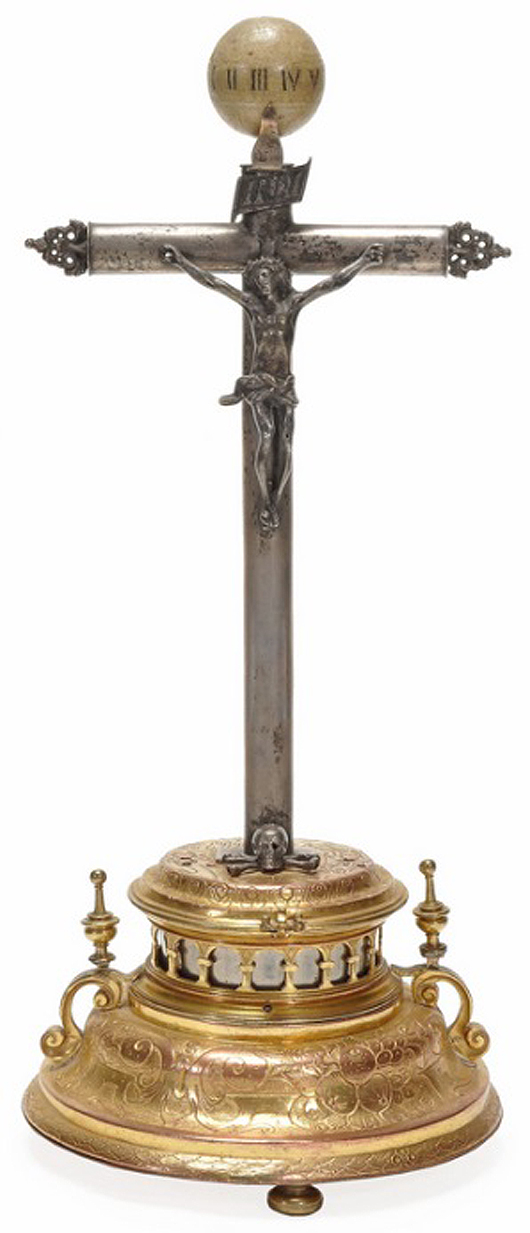
German gilt copper and brass crucifix clock is attributed to Hans Schlottheim. Estimate: £800-£1,200 ($1,335-$2,000). Dreweatts & Bloomsbury image.


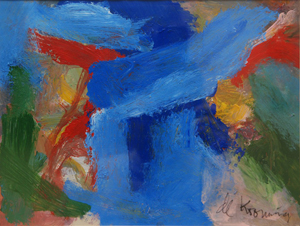







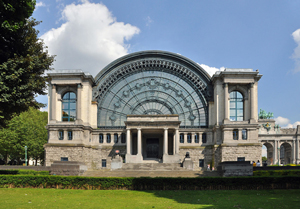
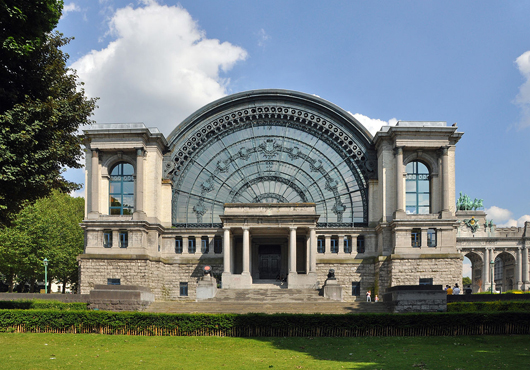
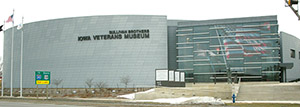

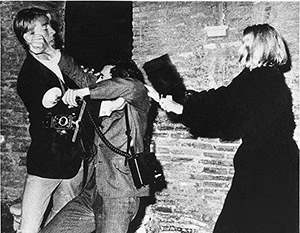
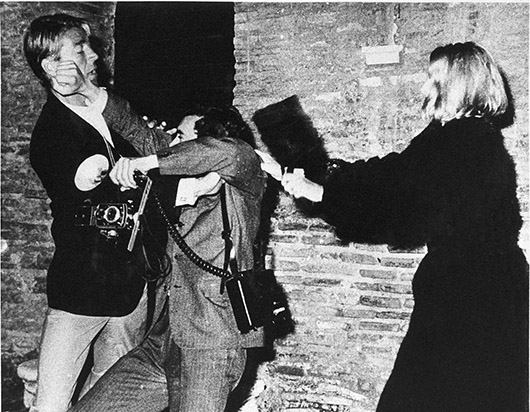

 LINCOLN, Neb. – The International Quilt Study Center & Museum’s next exhibition will showcase the visually dynamic nature behind a well-known pattern. “Design Dynamics of Log Cabin Quilts” opens March 7 in the Lois Gottsch Gallery.
LINCOLN, Neb. – The International Quilt Study Center & Museum’s next exhibition will showcase the visually dynamic nature behind a well-known pattern. “Design Dynamics of Log Cabin Quilts” opens March 7 in the Lois Gottsch Gallery. 